4000 mAh Power-Bar

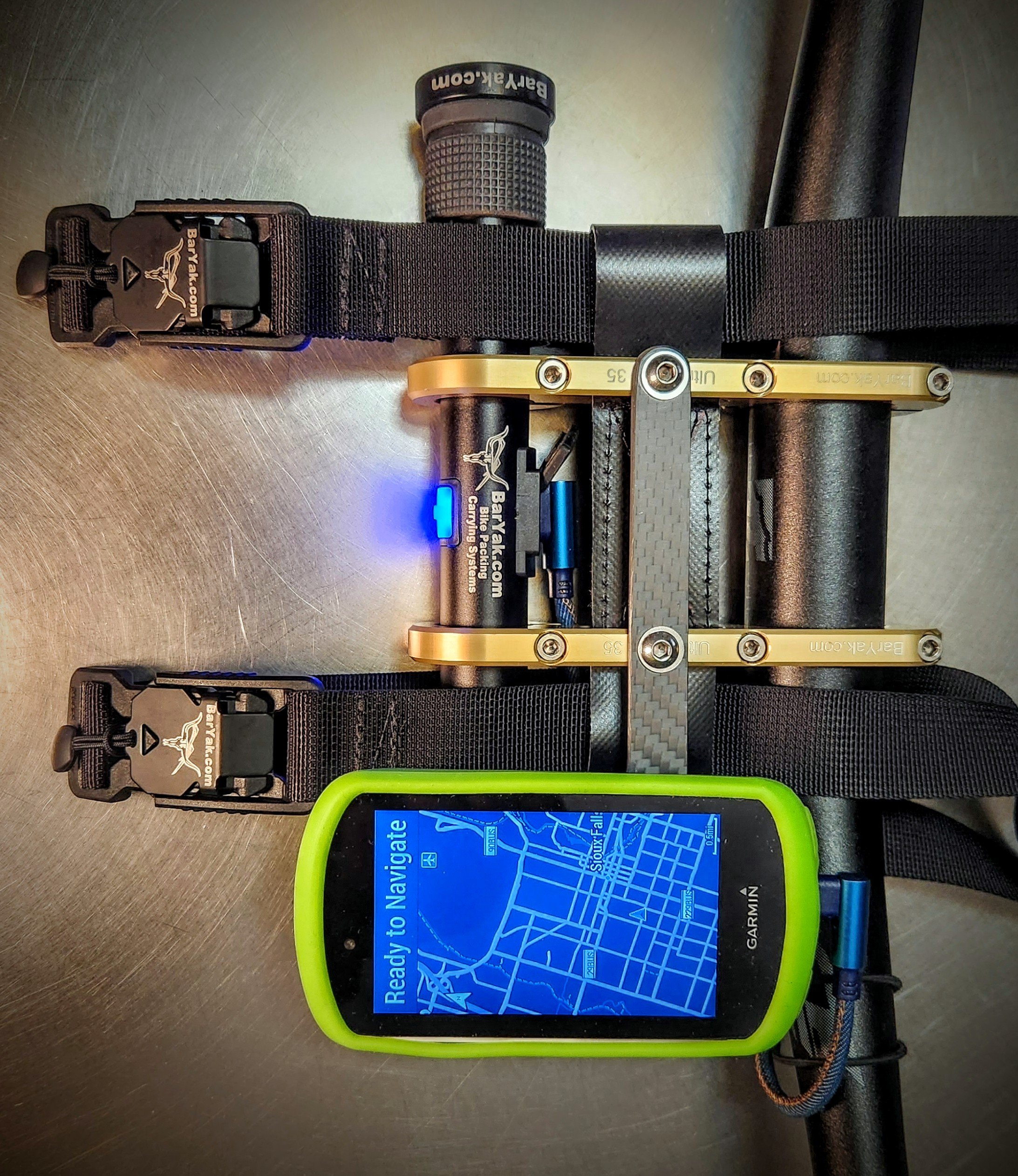

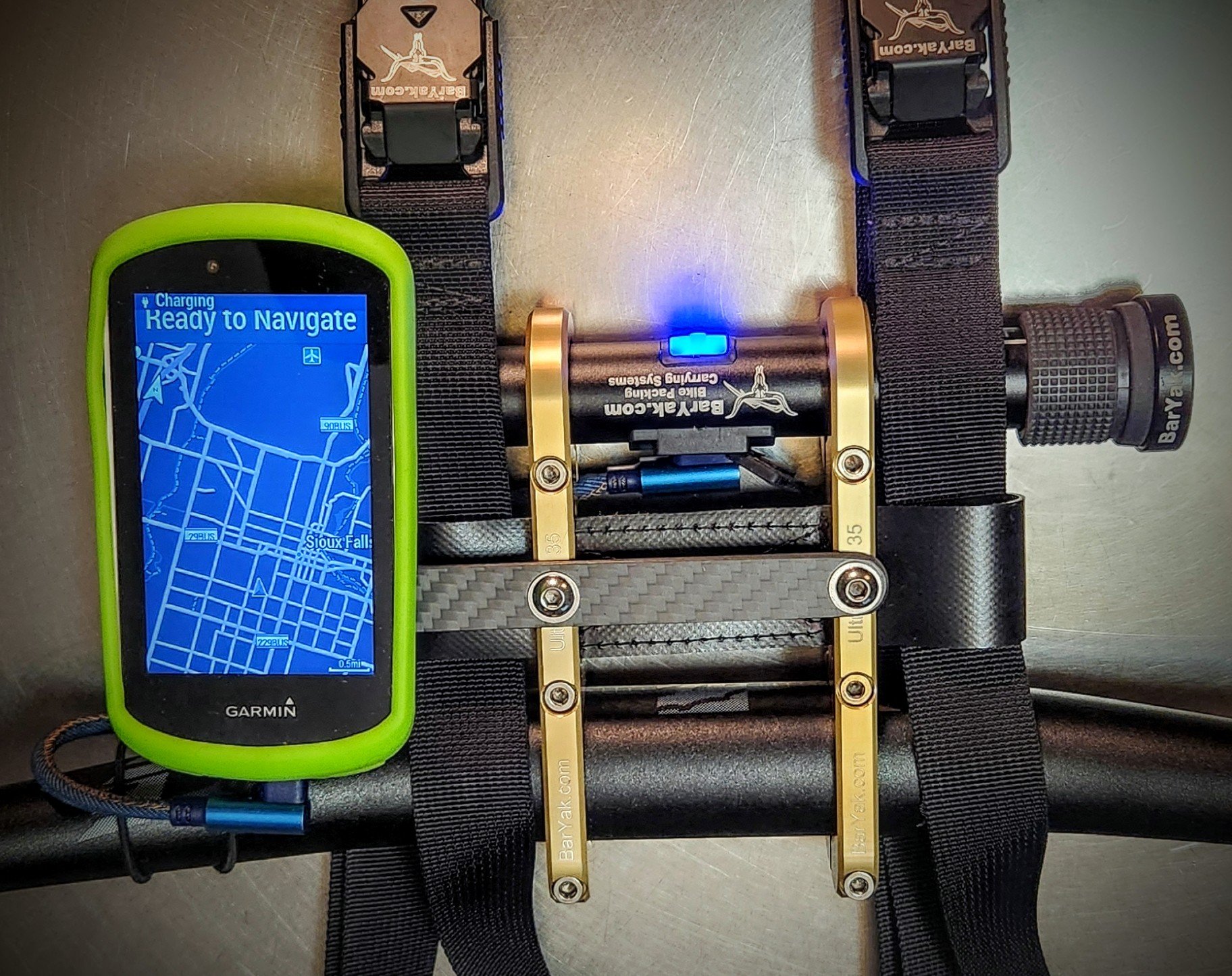
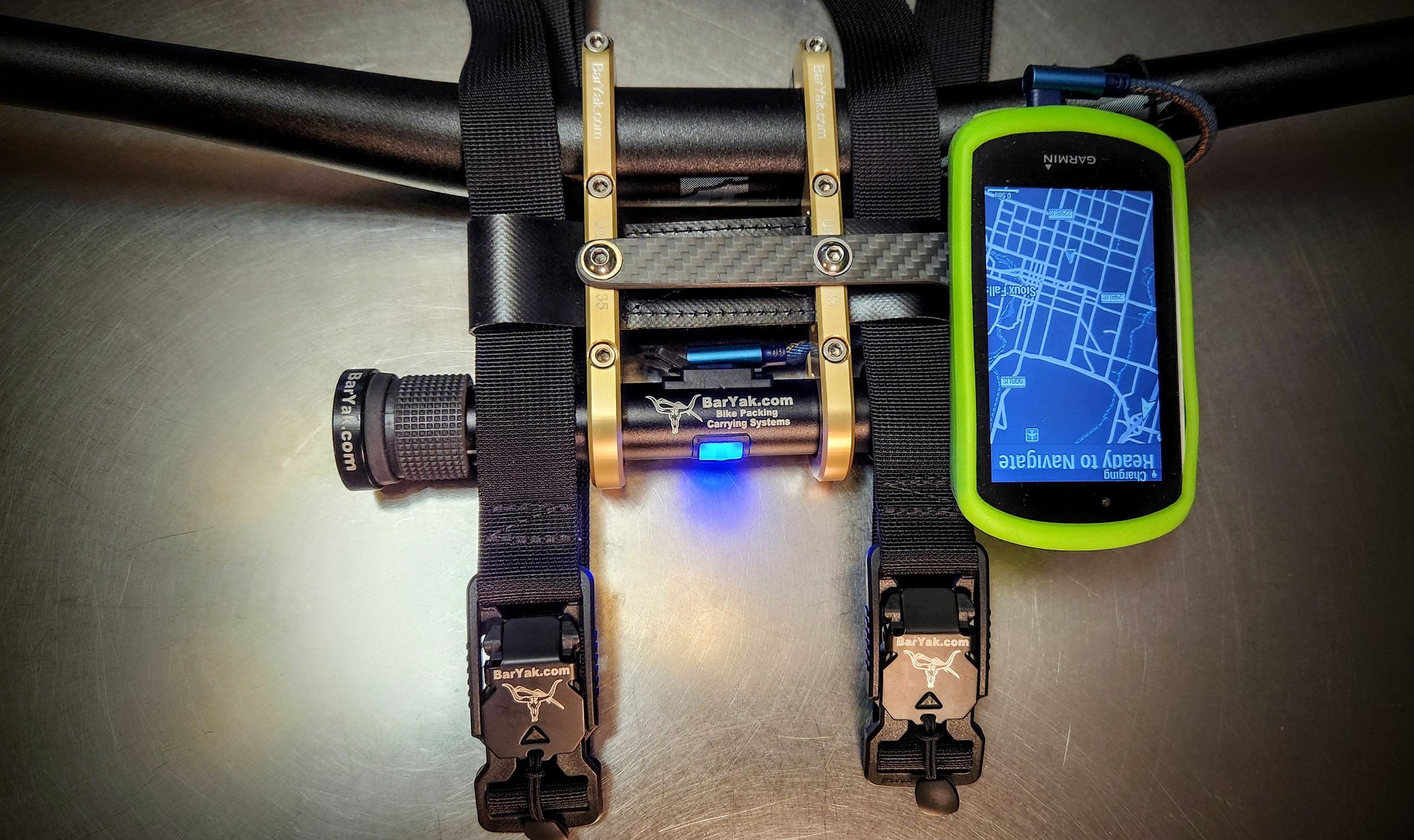
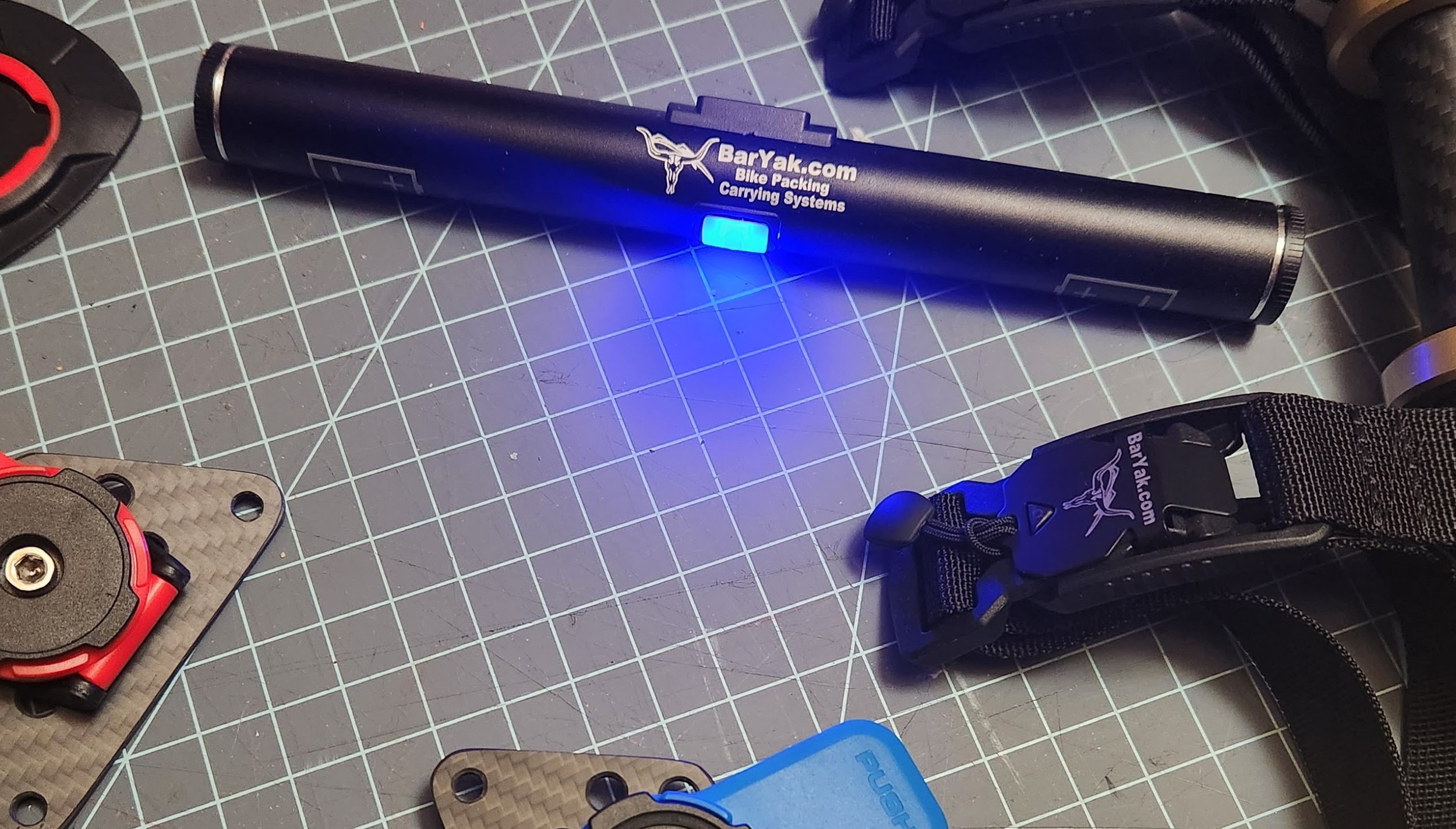

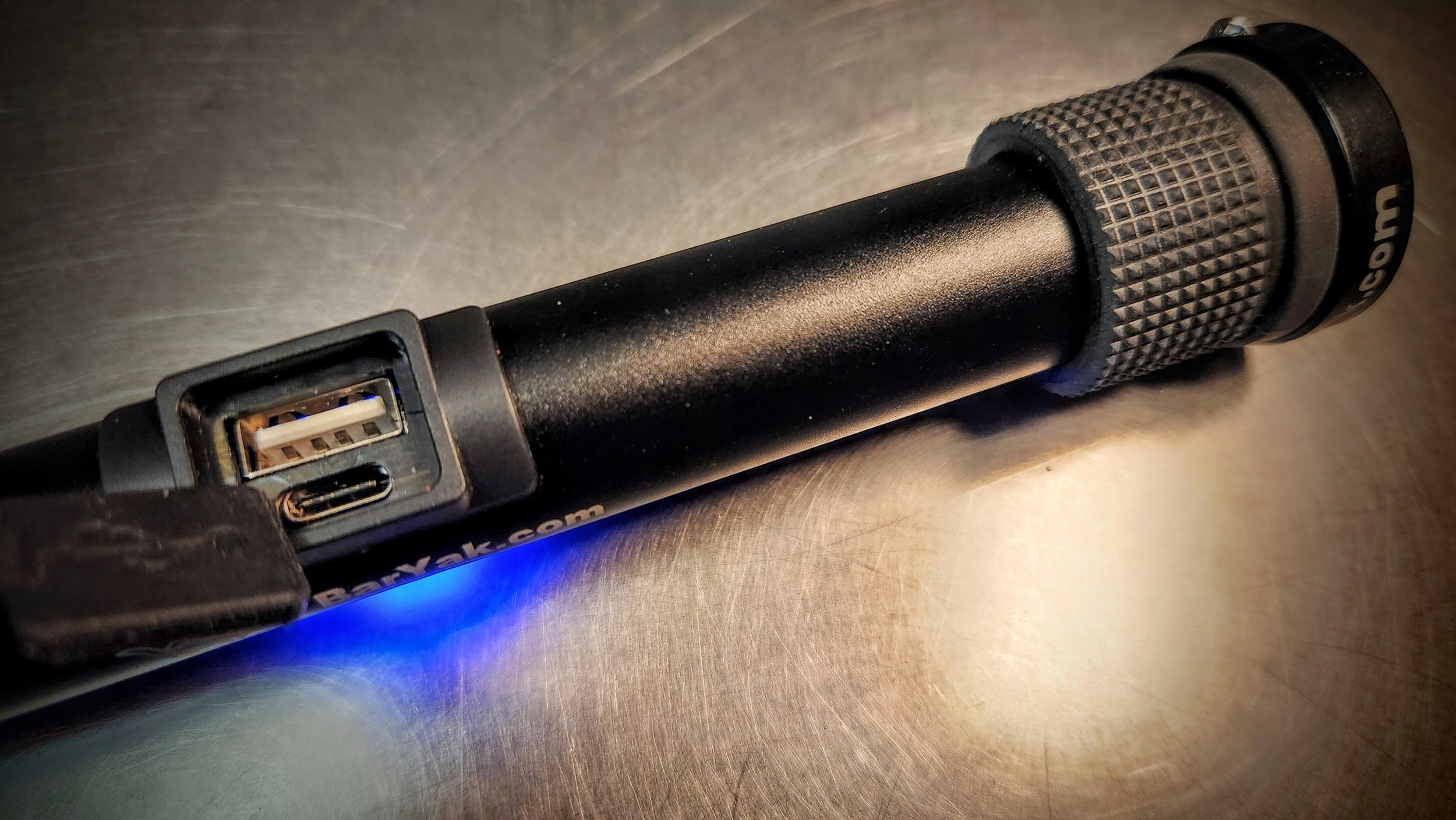
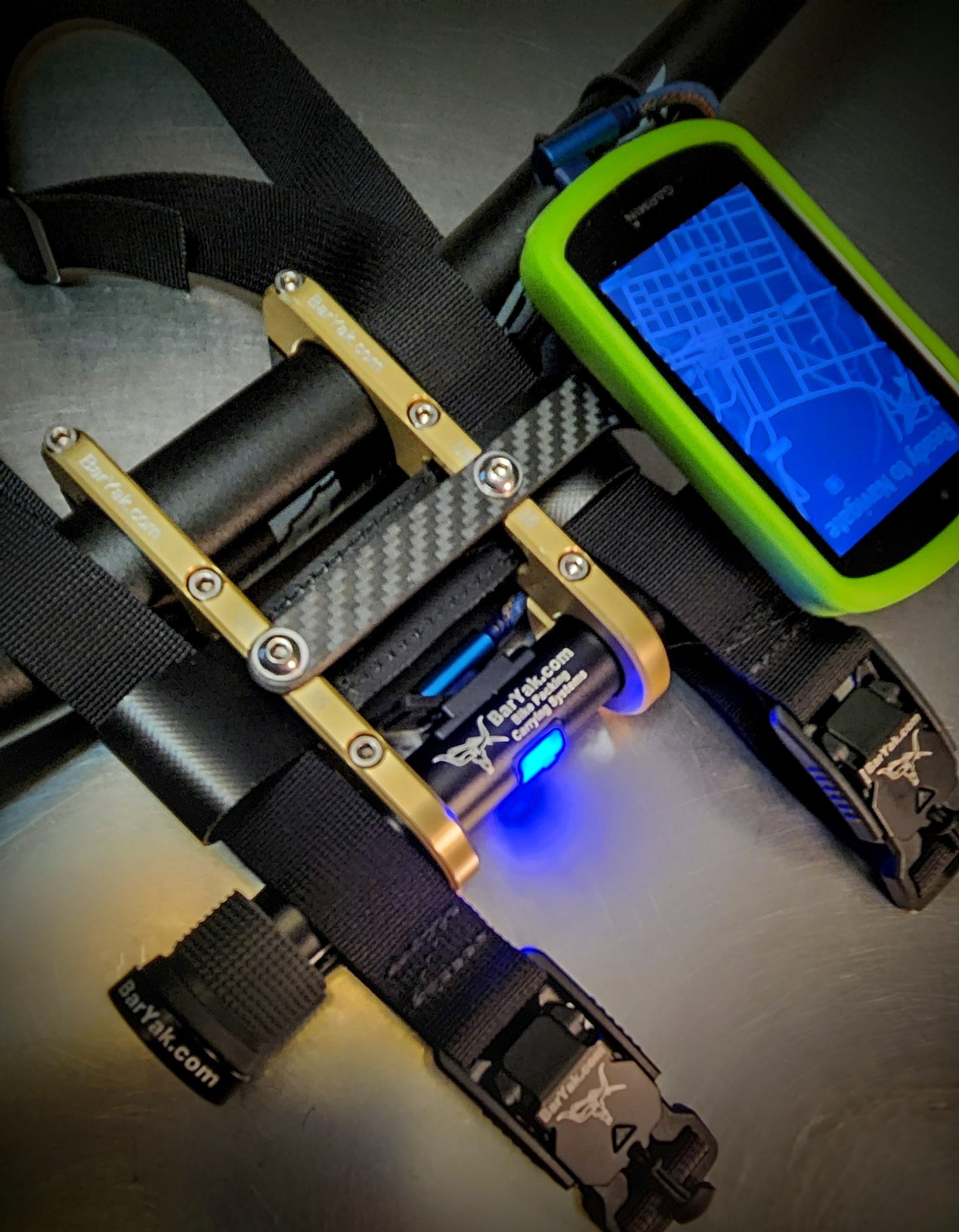











4000 mAh Power-Bar
USB Battery Bank with USB C charge port
🚲 USB Rechargeable Battery Bank has 2 Built-in Lithium ion 18650 batteries 4000mAh
🚲 Extend the Time on your GPS, Phone, Speedometer or Bike Light
🚲 >>>————> Weight: 5.20 oz. or 148 grams
🚲 USB Charger Power Bank, cross bar width 8 1/8” or 20.63 cm. featured with a USB Out port for charging your essential electronics and a USB C charging in port. The power bar can be charged from a computer or any USB power supply into the USB C port. Though we make no claims that this power bar has pass - thru technology it has been our experience when riding 6 mph or faster we have witnessed the power bar charging and our Garmin 1030 charging when connected in a series.
🚲 Example: Dyno Hub patched into the power bar patched into navigation device
🚲 Uses 2 Large capacity Lithium ion 18650 batteries
🚲 Aluminum 4000 mAh bar, fit BarYak Ultra, BarYak Expedition, BarYak XL Add - On. ( Comes with USB / USB-c Charging cable and BarYak Lock on bar ends as seen in pictures )
🚲 Ensure the silicon charging ports remain closed on rainy days .
🚲 30-day warranty from date of purchase on all electronic devices
🚲 What temp can 18650 battery withstand?
All 18650 batteries researched need a storage range of between -20 ~ +50°C (-4°F ~ + 122°F) or they will degrade, so this is a good rule of thumb to use. Also keep in mind the maximum temperature for storage should never exceed +60°C (140°F)
🚲 How Cold Temperatures Impact Lithium Batteries
When the temperature goes below freezing, just about any lithium battery will automatically cease charging. But the batteries themselves don’t freeze and will continue discharge at such temperatures. The battery should be warmed to a more moderate temperature before charging.
Advancements in lithium batteries are underway to allow for charging at temperatures below freezing, but even so the charge would be at reduced currents.
Older, lead acid batteries have the ability to go below freezing, but there’s a simple explanation for that, according to John Cromer, director of product at Fortress Power.
“You can go below freezing with lead acid because of its sluggish behavior,” explained Cromer. “Lead acid has the reputation of usage in more extreme temperatures than lithium, but that’s because it doesn’t have the same use cases as lithium.
“Starting your car isn’t the same as running your house. Plus, lead acid is a cheaper battery with a shorter life – it doesn’t always need or deserve the same protections of a longer-lasting, more expensive lithium battery system.”
When you use lead acid in extreme temperatures, you are indeed damaging the battery.
🚲 How Hot Temperatures Impact Lithium Batteries
For the negative effects cold temperatures can have on batteries, heat is by far the worst enemy of battery life.
It’s not just lithium batteries either. Any battery running at an elevated temperature will exhibit loss of capacity faster than at room temperature. That’s why, as with extremely cold temperatures, chargers for lithium batteries cut off in the range of 115° F.
In terms of discharge, lithium batteries perform well in elevated temperatures but at the cost of reduced longevity.
“It’s foolish to assume battery performance and longevity aren’t impacted by temperature,” summarized Cromer.
🚲 What is Ideal?
So what is the ideal operating temperature for lithium batteries?
“It’s simply not scientific to say there’s an exact temperature that’s too much, or not enough,” said Cromer. “In general, hot and cold are not as good as ‘warm.’”
Again, answers vary from different resources – but our answer is a range from 50° F to a high end of 110° F allows the battery to operate at peak performance while preserving its longevity and ability to function at highest capacity for 6,000 cycles.
When allowing for 2,000 and 3,000 cycles, that range increases to 32° F up to 120° F.
As such, if you’re able to store your batteries in an indoor, heated environment so they do not chill to below 50° F or install a heating system to warm batteries once reaching the 50° F threshold, you’re increasing, or at the very least preserving your battery’s life. While heating the battery does take energy, the alternative is faster degradation or worst case, an inability to access the energy you do have once temperatures reach the freezing point.
🚲 The story behind 18650 batteries
Did you know there are several different varieties of Lithium ion batteries? For example, Lithium-Manganese Oxide, Lithium-Nickel Manganese Cobalt Oxide, Lithium-Iron Phosphate, Lithium-Titanate, and Lithium-Cobalt Oxide. These batteries help power a wide variety of products from cell phones to Hybrid Vehicles. Crazy right? Not only that, but there are rechargeable and non-rechargeable versions. Lithium-ion batteries were first invented by an Exxon chemist called M. Stanley Whittingham in the 1970s. Which, if you think about it, lithium ion batteries are still relatively new and evolving each year. In the midst of my online search, I learned that lithium batteries are not rechargeable, but lithium-ion (Li-ion) batteries are rechargeable. Can you over charge a lithium battery? No, you cannot because they are not rechargeable. They simply cannot be recharged. Can you overcharge a lithium ion (Li-ion) battery? Yes! I do not know if you guys remember, but a few years back in 2016, there was a period of time when Samsung Galaxy Note7 phones were exploding! They were exploding because of a defect in the phones tied to the lithium ion batteries. Needless to say, that has caused much safer batteries to be produced. We recommend only using certified battery supply stores to replace and service the 18650’s batteries for your safety.
🚲 Have you heard of 18650 batteries? I stumbled upon Fenix-store.com and learned they use a specific battery in many of their lights. 18650 batteries are lithium-ion batteries. They get their name from their size: 18mm by 65mm. These batteries are not only used in flashlights, but also in: power tools, electric vehicles, vaporizers, cameras, laptops, and more! A High Drain battery basically means the battery gives out a larger amount of current than regular batteries. 18650 batteries can have anywhere from 300 to 500 charging cycles, which is insane! It usually takes about 3 hours to charge a 18650 lithium-ion battery fully. You know how back in the "old days," we were taught to let a rechargeable battery go completely dead before -recharging it? Well, that is definitely not the case anymore. I would suggest always keeping your 18650 lithium ion batteries charged over 3.5 volts to maximize your usage. The higher the voltage, the longer your 18650 lithium ion battery will last. Good to know, right? If you have spare 18650 batteries that do not get a lot of regular use, I would suggest charging them at least once every three months. Having fully charged back up batteries is always a good thing.
How to Prolong the Life of an 18650 Battery
About: lithium-ion 18650 batteries and packs to emerging technologies like drones, electric vehicles, robots, smart appliances, & vaporizers. We have cooperated with Hyperloop, Mars Rover, DARPA … More About 18650 battery »
There are many important specifications for an 18650 battery, including:
Capacity (mAh)
Discharge Current (A)
Charge Current (A)
Maximum Cycle Life
In this Instructable, I want to talk about maximum cycle life, and how you can use this measure to prolong the life of your batteries.
Step 1: Learn About Cycle Life
🚲 What is a cycle?
When an 18650 battery is charged and discharged, this is counted as one cycle.
18650 lithium-ion batteries are charged up to 4.2V and down to between 2V and 3V depending on the cell's specification for cut-off voltage.
To be safe, never discharge lower than 3.0V unless you know your cell's specification.
Discharging occurs anytime you use the battery for power. The electricity is drawn from your device, and the battery discharges current. You can also use battery testing equipment to discharge a battery.
To charge an 18650, you should use a special charger for lithium-ion cells.
🚲 How is cycle life calculated?
Cycle life is determined by the difference in capacity of your cell taken from its first-use rating to its present rating. For example, if your cell started at 3000mAh, but now only has 2900mAh. 2900 mAh is 96% of the original capacity.
When this percentage reaches 80%, we say the cycle life has ended (even though you may get a few thousand more cycles out of your battery).
So if we take a 3000mAh cell, when do we say its life has ended?
(80% of 3000 is 2400) so when the cell reaches a capacity of 2400 mAh we say its cycle life is over.
🚲 How many cycles does a typical 18650 battery have?
Most modern 18650 batteries have a typical cycle life of 300 - 500 (charge, discharge cycles). When in high-amp or high-drain situations, this can decrease substantially to 200 cycles. If you go over the maximum discharge current limit (A) you can decrease the cycle life all the way down to 50 cycles.
In optimal conditions, your cells may achieve more than 500 cycles.
Some chemistries are able to cycle thousands of times before reaching 80% of their capacity.
Rechargable Battery bar sourced from overseas.
